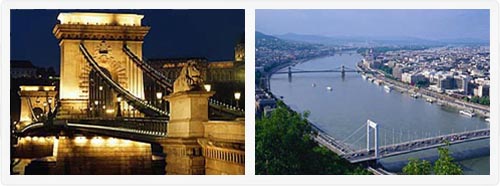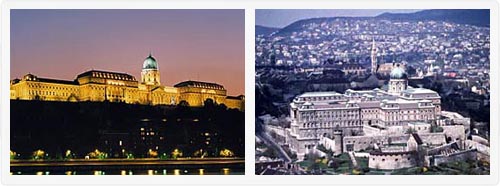Budapest - Pearl of the Danube
Today, Budapest is a city of two million inhabitants situated in the middle of Europe, in that it is roughly halfway between the Atlantic Ocean and the Ural Mountains.
For 2000 years there have been settlements in the area presently occupied by Buda and Pest, but only in 1873 were these united as the Hungarian capital. At that time the country was three times the size it is now, although, as the eastern half of the Austro-Hungarian Monarchy, it was not fully independent.
The Carpathian Basin is divided by the River Danube into a hilly and undulating western part and a mainly flat eastern one.
The southeastern corner of the Carpathian Basin marked the furthest point of penetration achieved by Western culture, Gothic architecture and the Reformation. Further east was the world of Byzantium, the western limit of which is Budapest.
The city consists of two parts: Buda in the hills and Pest on the plain. Pest is 1000 years old, while the Buda Castle District became a town seven and a half centuries ago. The former Royal Palace towers above the town. Building work began on it around the year 1300 and was finished about a century ago. In January 1945 it was almost completely destroyed - revealing remains of the medieval castle beneath the Baroque palace. It served as the court of kings belonging to the Anjou, Luxembourg and Habsburg dynasties.

From 1458 until 1485 it was occupied by the elected king Matthias Corvinus and from 1920 until 1944 by the elected regent Miklós Horthy. Today the building houses museums, a library and a theatre. Today this former seat of elevated personages is occupied by tourists taking photographs from the equestrian statue of Prince Eugene of Savoy, and from the Funicular Railway with its gentle pace Buda has been justly admired.
At the time of King Matthias Italian humanists declared that Florence was the finest city on the plains, Venice the finest city by the sea, and Buda the finest city in the hills.

But the Parliament, for example, is not just an important political arena, but one of Europe's finest Historicist style monuments.
At the same time the Classicist-style Chain Bridge with Buda Castle Hill in the background is one of the best-known symbols of the Hungarian capital.
On the square in front of the Parliament stand two statues depicting heroes of liberty: Ferenc Rákóczi II (on horseback), who fought against Habsburg rule in 1703; and Lajos Kossuth [standing], who fought against it in 1849.
Situated above the Danube, the Parliament offers a most impressive view, despite the fact that from here the building's details cannot be seen completely. Around the outside of the edifice are eighty-eight statues of monarchs - including the chieftains who led the Conquest, the early ruling princes [who did not yet possess Christian crowns], and the Hungarian princes of Transylvania (a region given to Romania in 1920 and confirmed as Romanian in 1947), who, between 1541 and 1699, were rulers of a virtually independent country.
Inside and outside, the embellishments on the Hungarian Parliament, which was built between 1885 and 1904, serve as a real encyclopedia of historic Hungary. On the outside can be seen the coats of arms of the counties, as well as statues of former rulers; inside are representations of crafts old and new.

Budapest is a somewhat older than Vienna, and during the Second World War it suffered almost as much as Warsaw. The scars inflicted by tank cannon in 1956 were soon removed, but the pock-marks caused by the machine-gun remained. Budapest was captured by Tatars and Turks.
Subsequently, it was occupied by the multinational troops of the Holy Roman Empire (Christians admittedly, but not renowned for their forbearance), and later still by Austrians, Germans and Russians. Even prior to 1944 it had experienced a dozen major or minor sieges, and those taking part in various uprisings were always happy to congregate here.
Budapest is not simply a beautiful city, but beautiful despite all these things. Perhaps this explains why it is so much loved.
MERHAVIA - www.merhavia.hu










